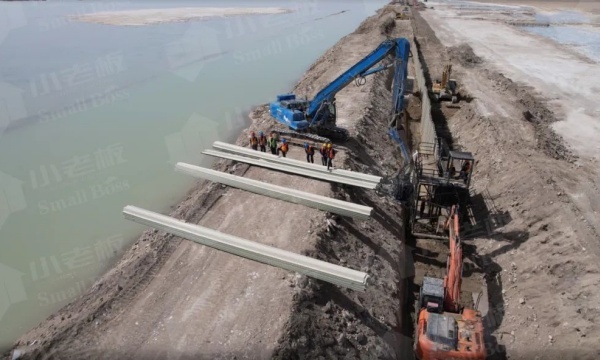1. Exceptional Corrosion Resistance in Marine Environments
Vinyl sheet piles demonstrate superior resistance to corrosion, making them a prime choice for saltwater applications. Unlike steel or wood, vinyl withstands prolonged exposure to seawater, harsh marine conditions, and chemical corrosion, ensuring long-term durability. This resilience minimizes replacement needs and maintenance costs, ideal for coastal infrastructure like seawalls, docks, and bulkheads.
2. Lightweight Design for Efficient Installation
Compared to traditional materials, vinyl sheet piles offer a significant weight advantage, streamlining transportation and installation. Their lightweight nature reduces labor costs, equipment requirements, and project timelines—an essential benefit for time-sensitive marine construction projects.

3. Environmental Sustainability and Ecosystem Protection
Crafted from recycled materials, vinyl sheet piling aligns with green construction practices. Its installation also supports habitat preservation, as it minimizes disruption to marine ecosystems. This eco-friendly solution is increasingly favored for projects prioritizing sustainability and coastal restoration.
4. Low Maintenance for Long-Term Cost Savings
Vinyl requires minimal upkeep throughout its lifespan. Unlike wood, it resists rot and decay, and unlike metal, it eliminates the need for protective coatings or rust prevention. This low-maintenance feature translates to substantial long-term cost savings for marine infrastructure.
5. Versatility in Design and Application
Vinyl sheet piles offer unmatched design flexibility, customizable in size, shape, and configuration. Whether for residential docks, commercial bulkheads, or coastal erosion control, their adaptability ensures they meet the unique requirements of any marine construction project.
Conclusion
Vinyl sheet piles combine corrosion resistance, lightweight efficiency, sustainability, low maintenance, and design versatility, making them a leading choice for resilient marine structures. Their benefits address the key challenges of coastal engineering, appealing to engineers and builders seeking durable, eco-friendly solutions.



